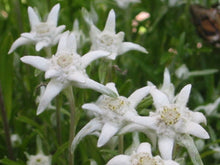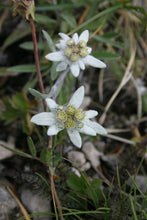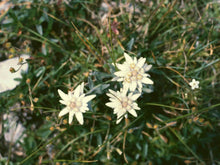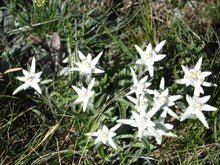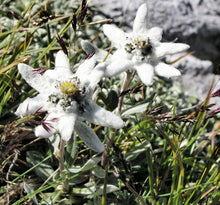
Leontopodium alpinum , commonly called edelweiss, is a well-known mountain flower, belonging to the daisy or sunflower family, Asteraceae.
The plant prefers rocky limestone places at about 1,800–3,000 metres (5,900–9,800 ft) altitude. It is non-toxic, and has been used in traditional medicine or folk medicine as a remedy against abdominal and respiratory diseases. The dense hair appears to be an adaptation to high altitudes, protecting the plant from cold, aridity, and ultraviolet radiation. As a scarce, short-lived flower found in remote mountain areas, the plant has been used as a symbol for alpinism, for rugged beauty and purity associated with the Alps and Carpathians, and as a national symbol, especially of Romania, Austria, Bulgaria, Slovenia, and Switzerland. According to folk tradition, giving this flower to a loved one is a promise of dedication.
The plant's leaves and flowers are covered with white hairs, and appear woolly (tomentose). Flowering stalks of edelweiss can grow to a size of 3–20 centimetres (1–8 in) in the wild, or, up to 40 cm (16 in) in cultivation. Each bloom consists of five to six small yellow clustered spikelet-florets (5 mm, 3⁄16 in) surrounded by fuzzy white "petals" (technically, bracts) in a double-star formation. The flowers bloom between July and September.




